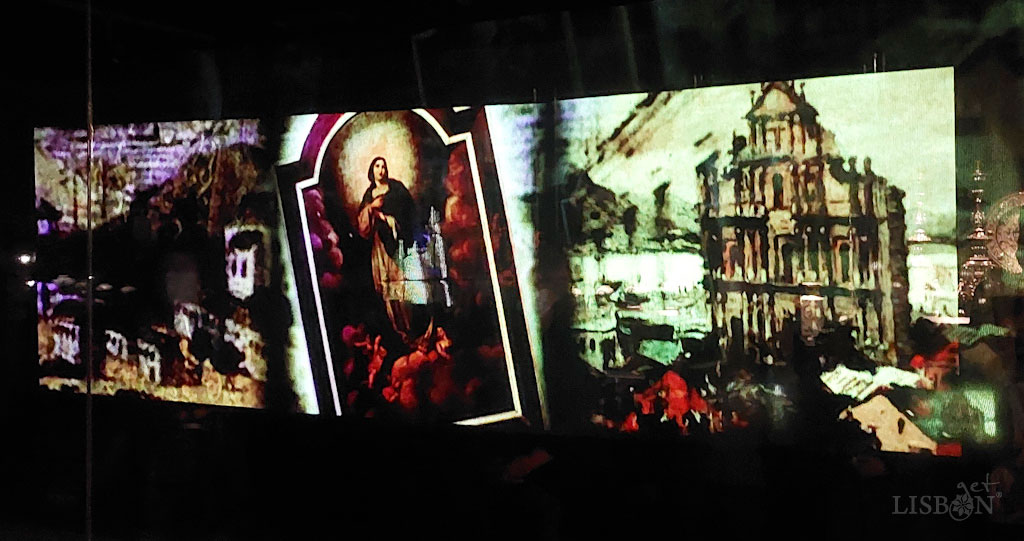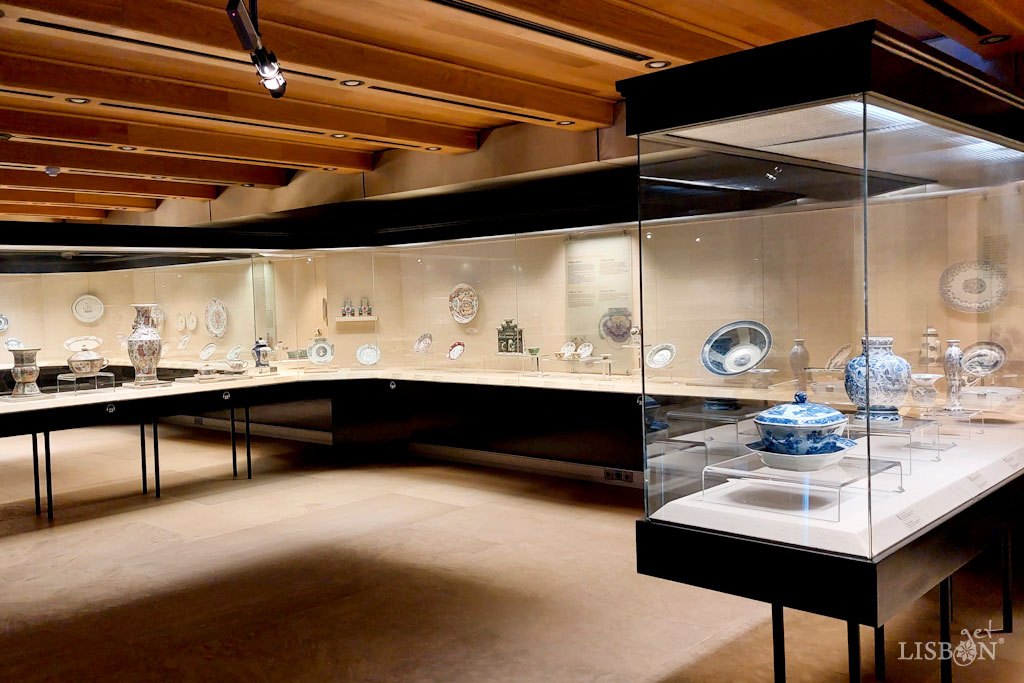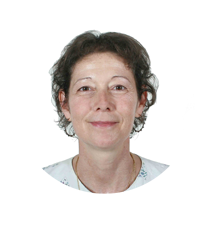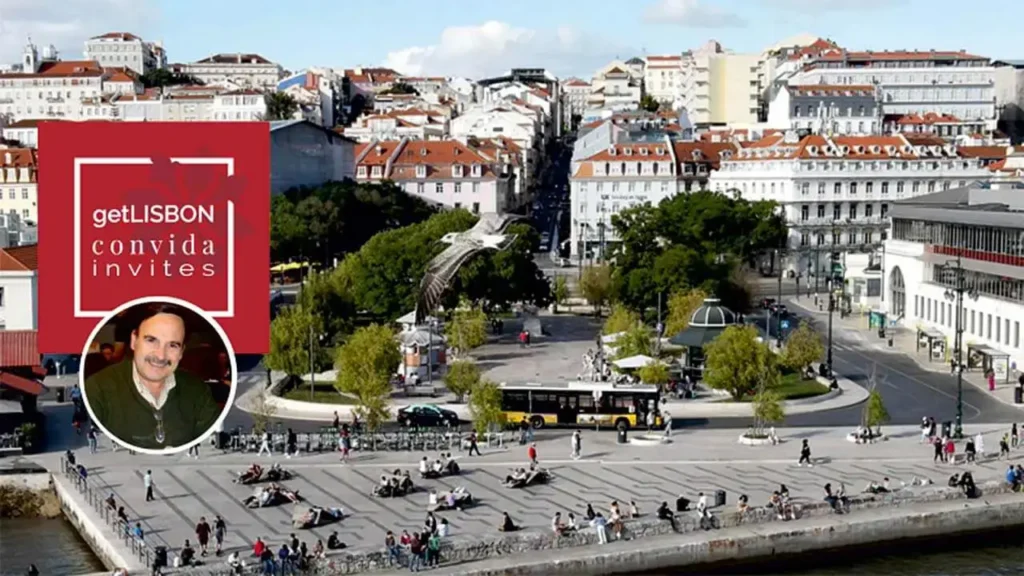Continuing the intercultural dialogue between the East and the West, the getLISBON invites series is sharing the second article by Ana Cristina Alves. This time, the author introduces us to the interesting Macau Scientific and Cultural Centre Museum and two of its relevant pieces: a porcelain bottle and a wooden statuette…
The Macau Scientific and Cultural Centre Museum consists of two distinct and complementary nuclei. On the ground floor is the section about the Historical-Cultural Condition of Macau in the 16th and 17th centuries, and on the upper floor, the Chinese Art Collection.
The Museum has more than 3,500 pieces divided into different typologies, including statuary, costumes and utilitarian and decorative pieces, of different materials, such as terracotta, textiles and porcelain.
On the ground floor, the visit takes place in cultural dialogue with the history of the Port of Macau, or else we wouldn’t be at the Museum of Macau in Lisbon, which has become since its foundation a privileged showcase of the platform of civilizational confluences that the city of Macau was, at the most diverse cultural levels in a broad sense. These naturally include sciences, such as cartography and nautical or the emerging technology of Renaissance times, transported by the Portuguese to southern China.
We suggest you read the article, also by Ana Cristina Alves, about the Name of Macau, which was born in close association with its physical geography, for some or with the spiritual domain for others.

On the first floor, we find the Chinese Art Collection, which describes 5000 years of history and art, starting with the first Neolithic ceramics, culminating in the ivories of the 19th century.
We’re taken on a journey through time with terracotta, bronzes, stoneware, blue-and-white porcelain, famille vert, famille rose, armorial and monogrammed, porcelain with religious symbols, Shek Wan ceramics, and to a troubled period of relations between China and the West, remembered in a collection of objects for opium smoking.
This is followed by more friendly relations represented in China trade, lacquers, Chinese School and European School paintings, in which landscapes, such as those of Praia Grande Bay occupy the foreground. And, still, we can contemplate other art objects, for example, fans, silverware, costumes, in addition to an important collection of numismatics.The collector António Sapage contributed a lot to the Chinese art collection of the Macau Scientific and Cultural Centre Museum, especially for its porcelains.

The Museum offers guided tours, generalist or specialised (particularly in the fields of history, philosophy, art and religion), for the general public, from Tuesdays to Fridays, between 10am and 5pm. Additionally, it provides introductory language workshops, such as “É em Chinês que a gente se entende” (It’s in Chinese that we understand each other), or more focused on culture, for example, “A China em 60 minutos” (China in 60 minutes), “A China em Caracteres” (China in Characters) and “Histórias Chinesas com Pensamento” (Insightful Stories about Chinese Thought). It also has a Chinese language and culture course, coordinated and given by professors Lu Yanbin, Lu Yang and Wang Suoying, consisting of six modules.
Two Pieces from the Macau Scientific and Cultural Centre Museum
The Referred to as Jorge Álvares’ Bottle

The referred to as Jorge Álvares’ Bottle
White porcelain decorated with underglazed cobalt blue,
CCCM, Lisboa, Inv. 257 DEP
According to data from contemporary historiography, Jorge Álvares, who gave the name to the bottles that are now in important museums in England and Portugal, is an adventurer and merchant. He cannot be confused with the foreman who in 1513 left Malacca to land on the island of Tamão in China, being the first Portuguese to set foot on Chinese soil.
Jorge Álvares was a wealthy merchant from Freixo de Espada à Cinta, whose partner was Fernão Mendes Pinto (1509-1583), the great adventurer, and a merchant as well. They shared the Sino-Luso-Japanese trade and its main commodities: Chinese spices, silk and porcelain, as well as Japanese silver.
This bottle of Jorge Álvares, kept at the Museum, belongs to the Jorge Álvares Foundation. It’s a blue-and-white porcelain, produced in Jindezhen (金德镇/鎮Jīndézhèn), Jiangxi (江西Jiāngxī) Province in the reign of the Emperor Jiajing [嘉靖 Jiājìng (1522-1566)] of the Ming(明Míng) dynasty.
From the inscription we know the exact date of the piece: This was commissioned by Jorge Alvrz in the period of the 1522 reign. The merchant, belonging to the groups of Portuguese pioneers who ventured into the porcelain business, bequeathed us, in addition to a set of magnificent bottles, the first work on Japanese matters dated from1547: Informação das Coisas do Japão.
As for the motifs that decorate the bottle, they couldn’t be more beautiful, as we can see by a kind of unicorn or Qilin(麒麟Qílín), a mythological animal whose appearance usually precedes the emergence of great sages or sanctified heroes and, therefore, only very rarely descends to the Earth. It did so, for example, at the birth of Confucius [孔夫子Kǒnfūzĭ (551-479 BC)], China’s greatest pedagogue, who today continues to be honoured in the various institutes named after him, the Confucius Institutes, spread across the world.
Furthermore, it is the moral values of the philosophy proclaimed by the sage that serve as the basis for Spiritual Socialism, developed from the times of Reform and Opening, inaugurated by Deng Xiaoping (鄧小平Dèng Xiǎoping), the leader who succeeded Mao Zedong (毛泽东) Máo Zédong) in China.It’s this type of Qílín (麒麟) that appears to us in ‘Jorge Álvares bottle’, walking among pine trees, symbolising rectitude, and bamboos, representing flexibility and inner emptiness. The unicorn marks a new time of holiness and righteousness, provided by its appearance.
| Never miss another article | Subscribe here |
The Statuette of Confucius

Confucius
Gilded polychromatic wood,
Macau, Qing dynasty (1644-1911), late 19th century
CCCM, Lisbon Inv 3291.
This is the statuette of Confucius (孔夫子像kǒnfūzǐ xiàng), father of Confucianism (儒教Rújiào) and the most important pedagogue in Chinese history. He was born in Lu State, Shandong Province (山东Shāndōng) in 551 BC and died in 479 BC.
The tradition of private lessons is owed to this educator. Moreover, he tried to influence the great lords of the time with his socio-political philosophy. But in vain. Nobody wanted to exchange the pleasures of this life for those of an austere life, dedicated to study and knowledge. Not even the ruler of the state of Lu, where Master Confucius became prime minister for a short period.
He defended a scale of moral values in which he distinguished Ren (仁Rén), an idea that can be translated as “benevolence” or as “humanity”. He was the first great advocate of a bureaucratized administration, led by men who distinguished themselves by knowledge and erudition, not by hereditary ties that commanded the political rise of the traditional nobility. Due to the fact that he defended a bureaucratic rationalism, democratic tendencies avant la lettre are attributed to him.
His birth and death are symbolised, as we already know, by a unicorn (qílín 麒麟), perhaps because this mythological animal embodies kindness and is linked to the family. It is said in China that its appearance is a sign of prolific offspring and, therefore, it appears ridden by a young man with a lotus flower in his hand. As it also symbolises Good, it appears only when the earth is governed with kindness, just as it happened during the times of Confucius, since the political and, above all, pedagogical action of the Master Confucius would have enabled the creation of a school of statesmen with high moral standards.
Confucius, the founder of Confucian philosophy, will later be worshipped as a god, which makes him the progenitor of Confucian religion. After Confucius died, they built a temple in his honour with an altar similar to the one used in the cult of the ancestors. The cult remained in the family and among his disciples for a long time.
In 195 BC, during the Han Dynasty (206 BC – 8 AD) he was recognized and worshipped by Emperor Gaozu (高祖Gāozǔ), the founder of the Western Han Dynasty (汉西Hànxī). In 37 AC, the Master’s family was ennobled. In 59 AD, during the reign of Emperor Han Mingdi (汉明帝Hàn Míngdì) its official cult would be decreed in all Chinese schools, which dated only from the previous year.
Find out more information about the Museum and CCCM on their website.
getLISBON suggests you also read the article 7 Marks of Macau in Lisbon, in which you can learn more about this city historically connected with Portugal.

Ana Cristina Ferreira de Almeida Rodrigues Alves has a PhD in Philosophy of History, of Culture and Religion from the University of Lisbon since 2005.
She coordinates the Education Service and the Chinese/Portuguese translation area at the Macau Scientific and Cultural Centre.
She also collaborates with the Institute of Culture and Portuguese Language of the Faculty of Arts of the University of Lisbon.
She has published works on tales and myths related to Chinese culture, essays on Chinese philosophy and pedagogical material on Chinese-Portuguese translation. In 2021, she won the A-Má Prize, awarded by Casa de Macau Foundation, with the short story “Delírios de A-Má”.




